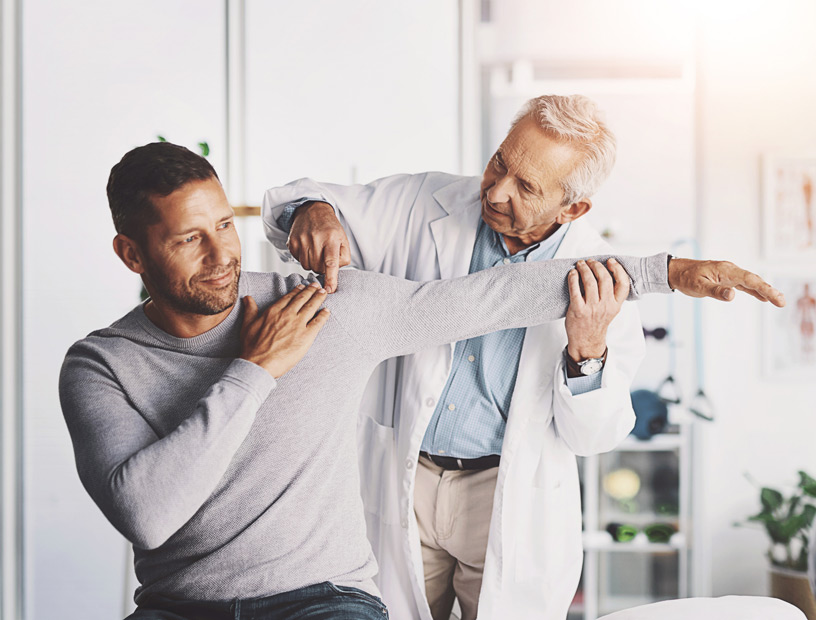
General orthopedic care is often the first line of defense for an injury.
If you’ve ever had shin splints, an ankle sprain, or another injury to your muscles, tendons, or joints, you’ve no doubt heard the term “RICE.” Rest, Ice, Compression, and Elevation is a general treatment protocol for injuries such as these.
- This method is meant to control swelling and speed up healing
- It is a good basic care procedure for the immediate aftermath of an injury
RICE
The benefit of RICE is that it’s simple to remember and simple to do, and it can be very beneficial in the hours and days following an injury. You rest the injured limb, apply ice during the first day or so, compress the injured area with an elastic bandage, and elevate the limb by resting it on something instead of letting it dangle down. That keeps blood from pooling in the limb and allows your immune system to better work on healing the injury.
However, RICE is also very general. It is used sort of as a catch-all treatment for people who can’t yet get to a doctor. That’s not to say it’s not effective; it is very effective in most cases. But it shouldn’t be your only treatment if you’ve hurt yourself.
If you have sustained a musculoskeletal injury and can’t get to a doctor immediately, RICE should be your first action, assuming you aren’t bleeding (in which case, stop the bleeding first and worry about RICE after that). But then it’s important to make an appointment for additional help and for a thorough evaluation of your injury.
How to Use RICE

The definition of RICE can seem overly general to those who’ve never needed it. Each stage is straightforward:
Rest: Keep the affected body part at rest. For example, if you’ve hurt your leg (e.g., shin splints), stay off it for a day or two. Moving or placing weight on the injured limb adds stress and delays healing.
Ice: Get a cold pack or a bag of ice, wrap it in a towel, and place it on the affected area for about 20 minutes (try for 20 minutes on, 20 minutes off).
Compression: Wrap an elastic bandage around the area to prevent the limb from swelling too much. Don’t use a bandage that won’t stretch a little.
Elevation: Put the injured limb up. For example, if you are sitting on a couch, move so that you’re reclining and your injured limb rests on a couple of stacked-up cushions.
Additional RICE-Linked Treatments
Minor variations on RICE could help you as well, depending on your injury. For example, if you were not bleeding, taking ibuprofen can help control swelling. Another version is POLICE, or Protection, Optimal Loading, Ice, Compression, and Elevation. Optimal loading refers to moving the injured body part relatively soon after the injury occurs to help prevent stiffness.
To sum up, these forms of general care should be your immediate treatment plan for non-bleeding musculoskeletal injuries, like shin splints or strains. However, you should see a doctor soon after that to determine further treatment.
For minor injuries, your orthopedic doctor may recommend that you continue this form of general care until your injuries subside.

on caring for specific orthopedic needs.
